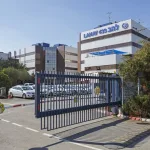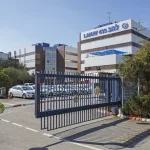- Business
Browse Business
- Technology
Browse Technology
Latest in Technology
Machine Learning Offers New Way to Predict Plant Water Use, Israeli Study Finds
5 minutes agoCyberDome Drill Highlights Growing Digital Threats to Israel’s National Systems
1 hour agoAfter Nova Massacre, Israeli Startup Builds Tech to Keep Families Connected in Crisis
4 hours agoFusion Control Breakthrough Brings Clean Energy Closer
4 hours ago - Politics
Browse Politics
Latest in Politics
Israel’s High Court Overturns Government’s Attempt to Remove Attorney General
2 days agoNegev Cities to Receive $31.8M Boost for Housing, R&D, and Airport Plans
5 days agoIsrael, Bolivia Restore Diplomatic Relations
6 days agoCyber Weaknesses Put Israeli Elections, Democracy at Risk, State Comptroller Warns
1 week ago - Security
Browse Security
Latest in Security
CyberDome Drill Highlights Growing Digital Threats to Israel’s National Systems
4 minutes agoAfter Nova Massacre, Israeli Startup Builds Tech to Keep Families Connected in Crisis
3 hours agoIranian Missile Fragments Become Symbol of Hope at Reopened Israeli Care Facility
1 day agoIran Suspected in Deadly Sydney Chanukah Shooting
2 days ago - Economy
Browse Economy
Latest in Economy
Israeli Exports on the Rise, Approaching Pre-War Peak
2 minutes agoTrade Momentum Builds as German Business Leaders Visit Israel
3 hours agoNegev Cities to Receive $31.8M Boost for Housing, R&D, and Airport Plans
5 days agoHaredi Enlistment Would Ease Army and Economic Strain, Bank of Israel Says
5 days ago - Crime
Latest in Crime
Iran Suspected in Deadly Sydney Chanukah Shooting
2 days agoIsrael’s Anti-Corruption Chief Investigated for Alleged Ties to Crime Network
6 days agoIsraeli Police Probe Fatal Shooting as Arab-Sector Murder Toll Climbs to 241
6 days agoIsraeli Authorities Charge Ashkelon Resident Over Months-Long Ties to Iranian Operatives
2 weeks ago - Society
Browse Society
Latest in Society
Iranian Missile Fragments Become Symbol of Hope at Reopened Israeli Care Facility
1 day ago‘Vile’: Israeli Leaders Condemn Deadly Sydney Chanukah Attack
2 days agoIsrael’s High Court Overturns Government’s Attempt to Remove Attorney General
2 days agoOne Dead, Dozens Rescued as Storm Byron Sweeps Across Israel
5 days ago - Services
Travel & Transportation
Technology & Utilities
Religious & Cultural
Information & Directories
Government & Public Services
Jerusalem, 31 August, 2025 (TPS-IL) — Israel’s Ministry of Energy and Infrastructure continues to connect factories and consumers in the periphery – remote regions – to natural gas: “Super NG Hadera and the Valleys” from the Shaffir Engineering Group has completed the construction of the new natural gas distribution line in the Emek HaMa’ayon and Beit She’an area. The line, 22 km long, starts in the Tel Yosef area and ends at the “Palziv” plant in Kibbutz Ein Hanatziv. The Ministry of Energy and Infrastructure assisted in the construction of the line with support of approximately 10 million Shekels ($2.99 million).
In the first phase, seven plants and consumers will be connected to the natural gas distribution network: the Beit Hashita Asphalt Plant, the Beit Alfa Asphalt Plant, the Beit She’an Asphalt Plant, the North Fertilizer Plant, the “Of Tov” Plant in Beit She’an, the “Electra Power” cogeneration facility, and the “Palziv” Plant – which together will consume over 15 million cubic meters of natural gas per year. By the end of the year, the “Nir Otak” Plant in Kibbutz Nir David is also expected to be connected, and in the first quarter of 2026 – the “Beit Hashita Sours” Plant.
The project is part of the Ministry of Energy and Infrastructure’s policy to encourage a transition to cleaner energy and save on high energy inputs in the periphery.




















